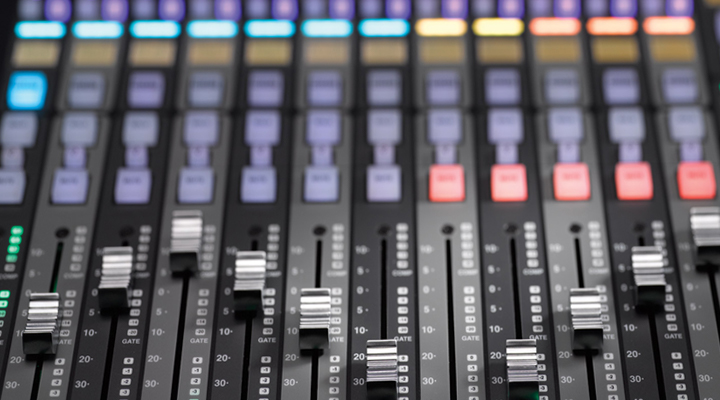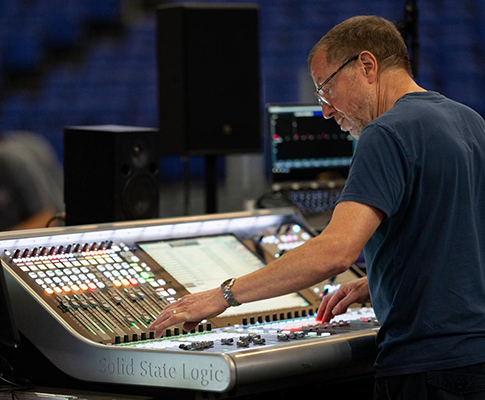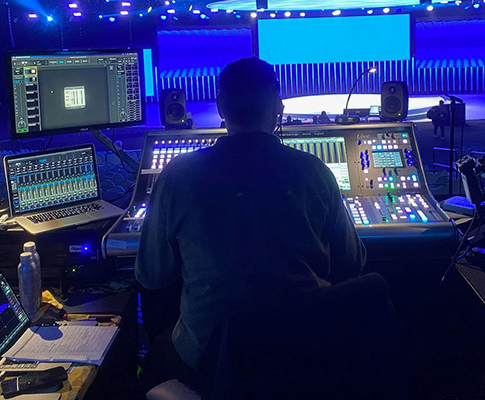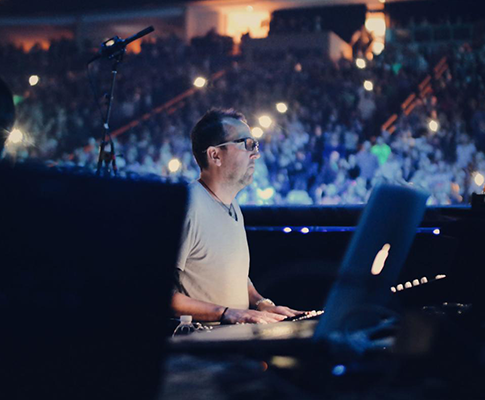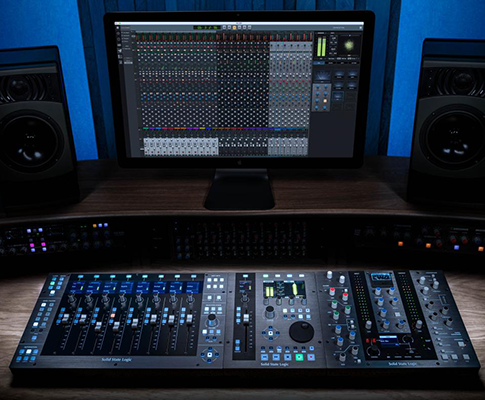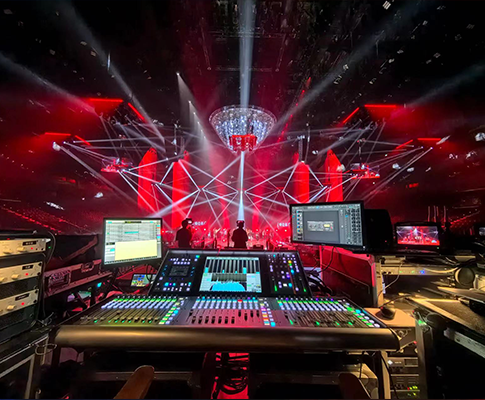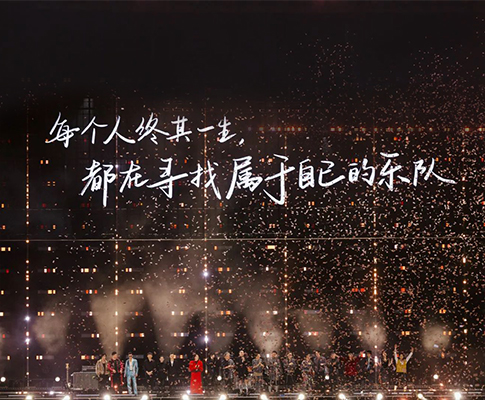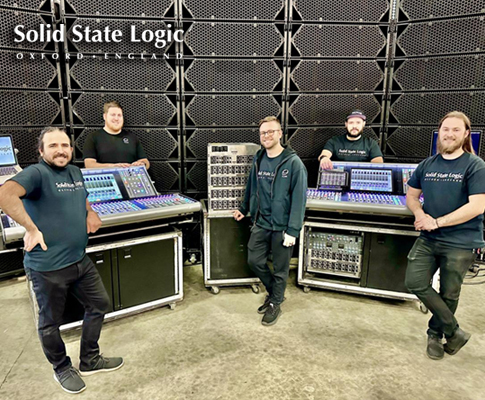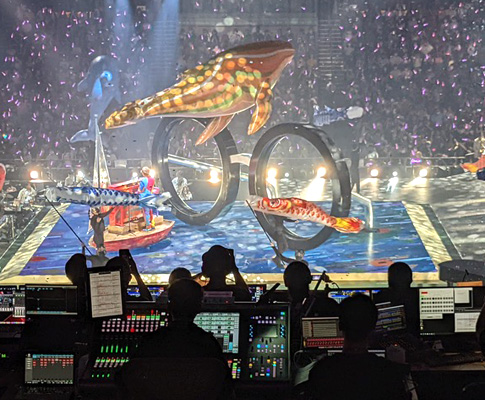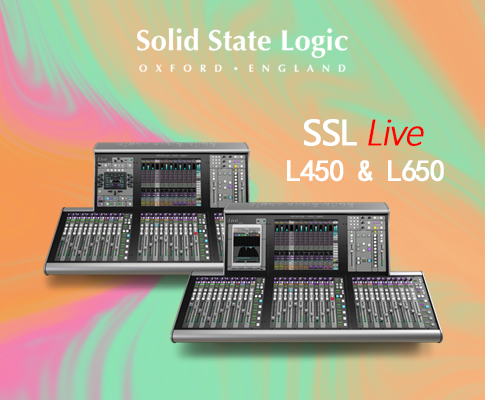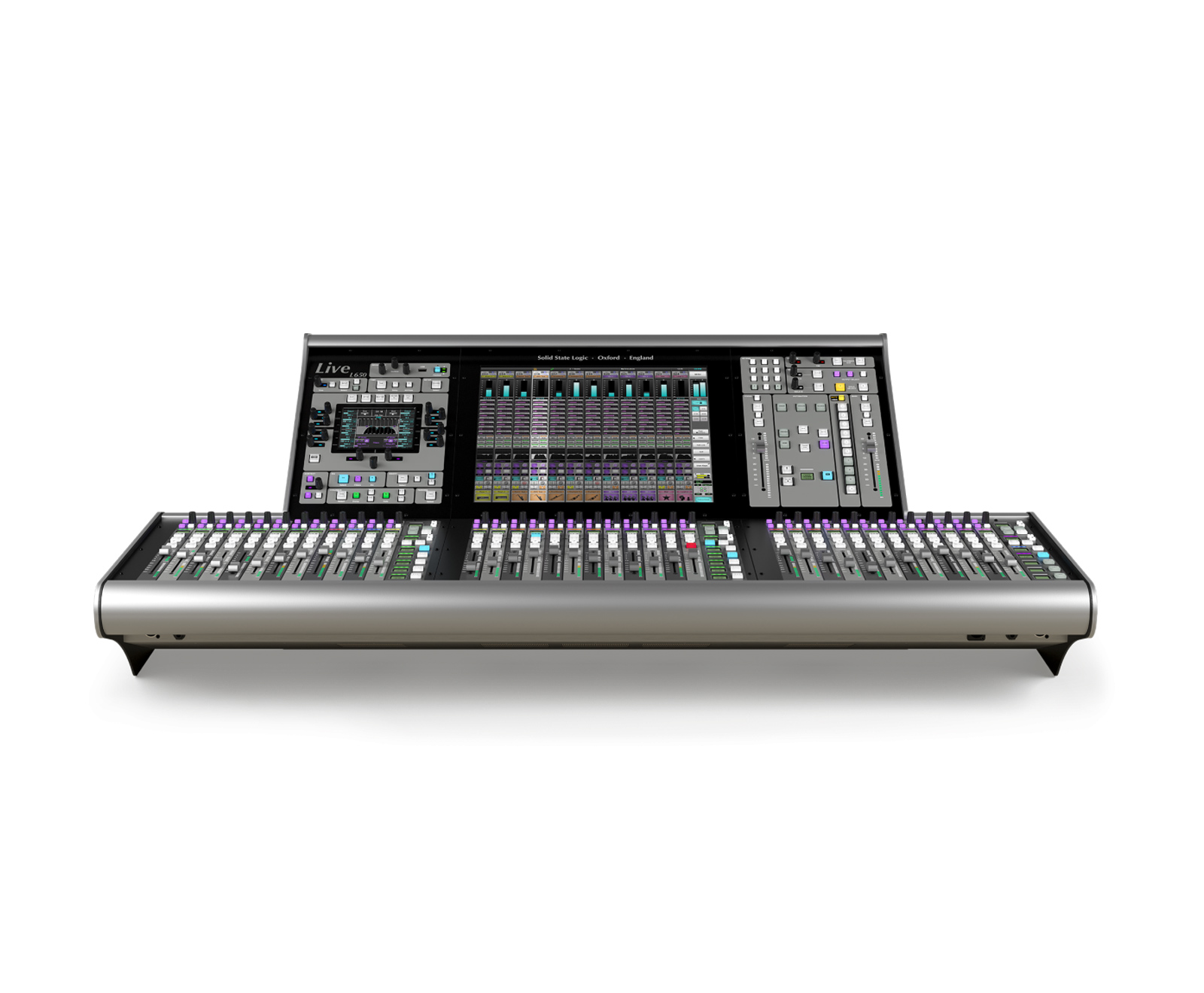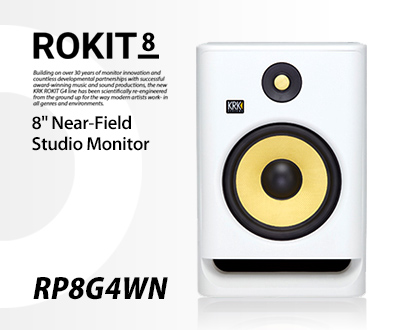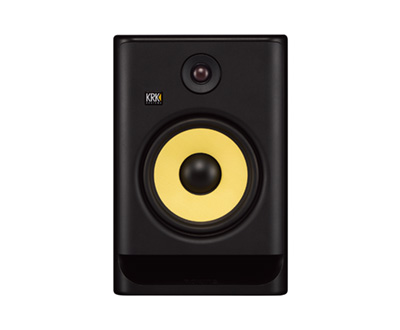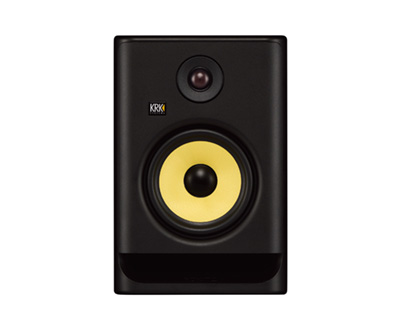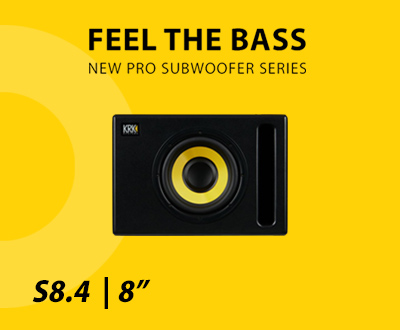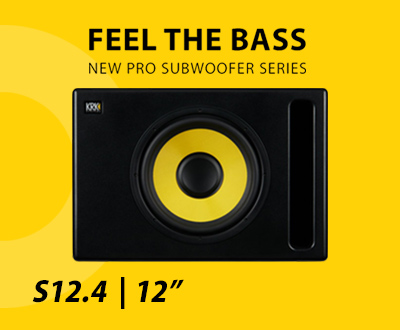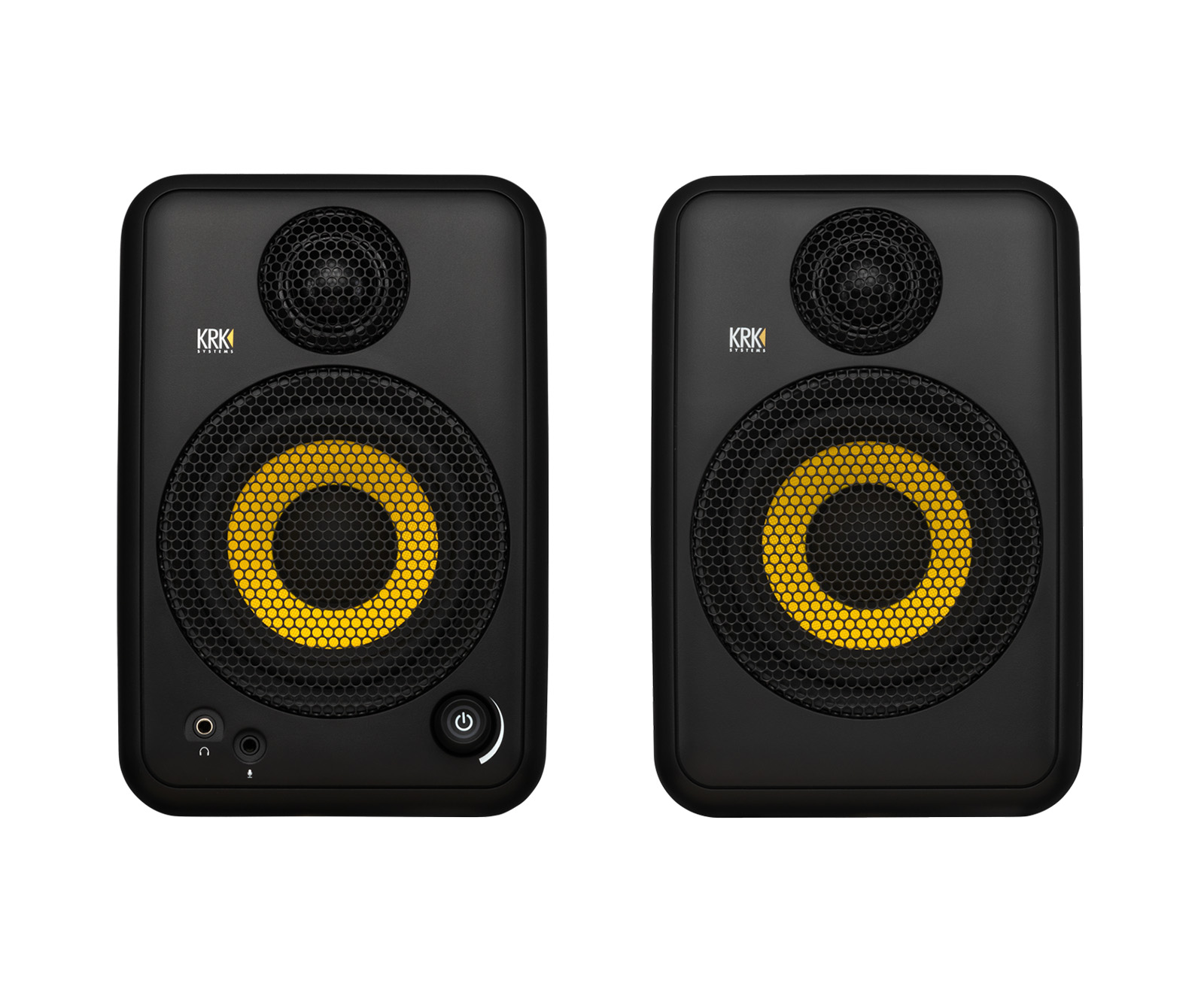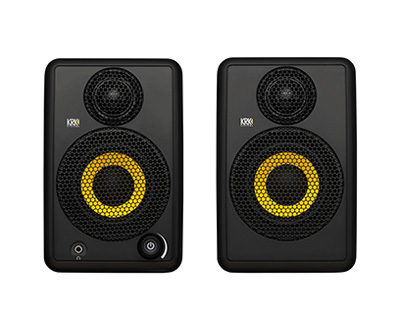-
Large Format Production Powerhouse
The L650 is the flagship of the Live console range offering the most powerful mix engine with 312 paths and a flexible 36+2 fader layout. Processing algorithms and audio hardware are shared throughout the Live console range so no matter which console is used the same sonic excellence is guaranteed. Showfile compatability and management allows a show file created on any model of Live console to be used on any other model.
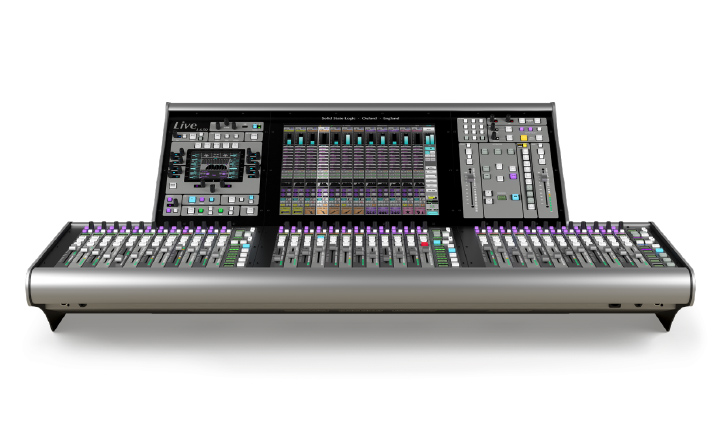
SSL Live consoles are designed to help operators deliver outstanding performances in the most demanding applications in Touring, Installation, Houses Of Worship and Theatre. Like all SSL consoles the secret to the success of the L650 is a dedication to great sound. Part of the success is attributable to exemplary hardware performance throughout the signal chain: bringing SSL Studio grade mic pre’s to the stage, outstanding audio conversion, 96kHz operation and detailed, musical summing with massive headroom. An equally important part of the power of the L650 is, however, the way it enables operators to perform at their best. The deceptively simple ergonomic excellence of the combination of multi-touch screen control with assignable hardware controls, the use of colour coding, the open architecture which lets engineers configure the console layout to suit their own way of working, the extensive arsenal of processing options, the precision and depth of those processing tools… and so much more… it all combines to let the operator get the sound they want extremely quickly.
-
Control Surface
The key to a great control surface is a clear view of everything in your audio environment and finding exactly the control you need at your fingertips when you need it. With the Live SSL’s obsession with ergonomics and workflow has delivered an intelligent, elegant and comfortable layout. All of the most commonly used functions are carefully arranged so that they sit within reach where your hands naturally fall on the console. There is a wealth of visual feedback with carefully considered use of colour change technology that will not fatigue the user during long periods of operation. The Live control surface delivers a genuinely intuitive combination of gesture-based touch screen & hardware control and a whole collection of innovative features designed to streamline workflow.
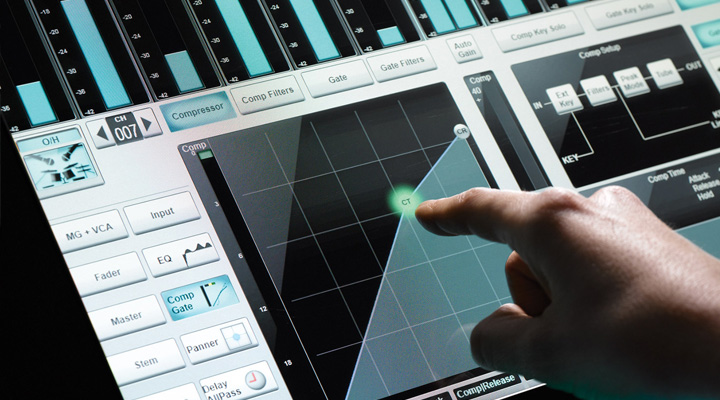
-
Processing Power
The power of SSL Live consoles is provided by the ‘Tempest’ platform which was a ground up development, learning from more than 25 years of digital console development, to specifically to meet the demands of live production. This 4th generation processing technology allows the engineer to always focus on what really matters - having the power to do your job well. Live harnesses Tempest’s power in a flexible way to let you balance the allocation of resources between signal processing and console architecture to suit each show without limitation. All legacy processing code – the key to the sonic excellence of previous generations of SSL digital consoles – has been rewritten in the latest software languages. The high capacity signal processing engine at the heart of the L650 uses SSL’s patented Optimal Core Processing (OCP) to deliver highly efficient and reliable performance with minimal latency. Tempest delivers all of the power required to equip the L650 with all of the mixer architecture, processing power and connectivity to handle large scale events. For ease of transportation the L650 processing engine is integrated entirely within the control surface.
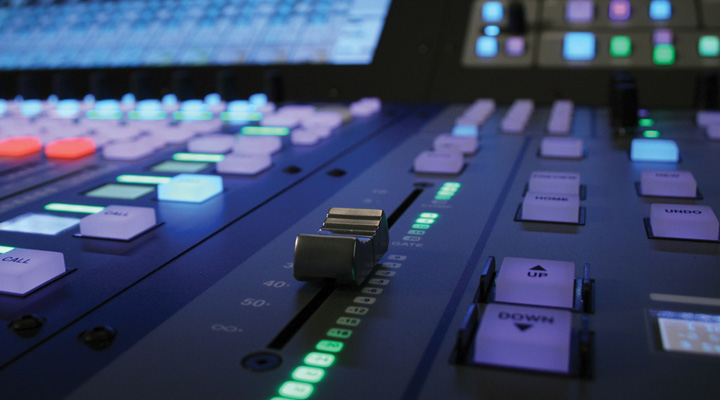
-
Audio Performance
SSL has always set the audio performance benchmark for others to reach and sound quality is the primary design consideration of SSL Live consoles. Nothing is sacrificed so that the ultimate sonic performance can be delivered. The local I/O and Stageboxes use SSL’s patented mic amp technology to deliver SSL SuperAnalogue™ performance with studio grade mic pre’s combined with 24bit/96kHz DAC’s to deliver a frequency response that is within 0.05 dB from 20 Hz to 20 kHz (within 1.3dB down to 10Hz) and a THD of 0.005%. The circuitry is DC coupled (no electrolytic capacitors in the signal path) and has a high input impedance. Mic amp gain is controlled with extreme precision in more than 16,000 steps ensuring totally smooth control, very good common mode rejection and extremely low distortion. 64-bit internal processing is used throughout guaranteeing maximum precision to support the highest standards of audio performance.

Audio quality is a key factor in the usability of the L650. Users report that they are able to achieve great mixes quickly and easily without the need to employ additional effects and processing to compensate for inferior mic pre's, audio converters, internal audio path and mix bus. The L650 provides the audio processing toolkit that generations of mix engineers have used to create countless hit recordings along with a suite of freshly developed processors for live applications. A full processing path includes a four band parametric EQ that can be switched between a precise constant Q mode and ‘SSL Legacy EQ’ with its well known and unique tonal character, hi- and lo-pass filters with selectable slopes, SSL dynamics presented as separate compressor, analogue style tube emulator, expander/gate as well as a delay line and cleverly configured all pass filter. Along with the acclaimed Dialogue Automix system from SSL’s broadcast consoles, the L650 also features precision audio analysis tools such as the fixed point per octave spectrum analyser
-
Remote Control and Off-Line Setup
SSL’s SOLSA software (SSL On/Off Line Setup Application) is a stand-alone version of the SSL Live console software that can be run on any suitable PC. It is designed for both Offline project set up and configuration and 'Online' real time control of a console.
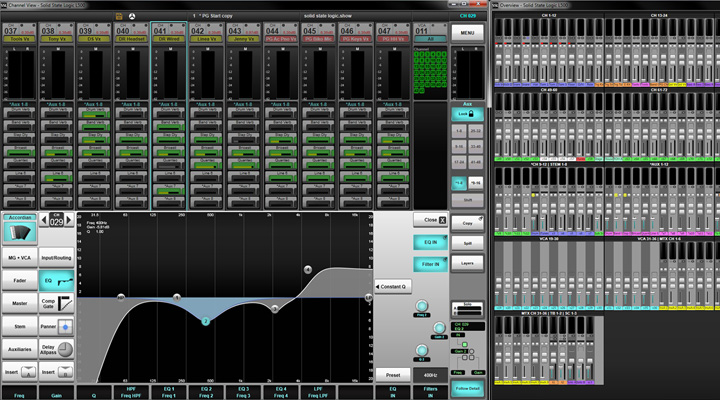
-
Tablet Control
The TaCo (Tablet Control) mix app provides wireless tablet control of SSL Live consoles from iPad and Android devices. On stage, TaCo can be used by both monitor engineers and artists. The app can be limited to control an individual Aux mix or unlocked to quickly and easily control all mixes from a single screen. Multiple tablets can be connected simultaneously to provide mix capabilities for each performer on stage.
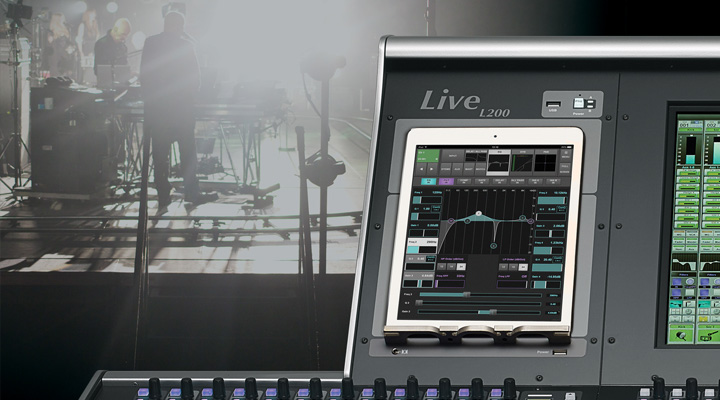
-
Eyeconix
In a console with banks and paging, speed of channel identification can make the difference between embarrassment and excellence. SSL’s unique Eyeconix display enables icons to be displayed on each channel greatly reducing the time taken to identify and access the desired controls.
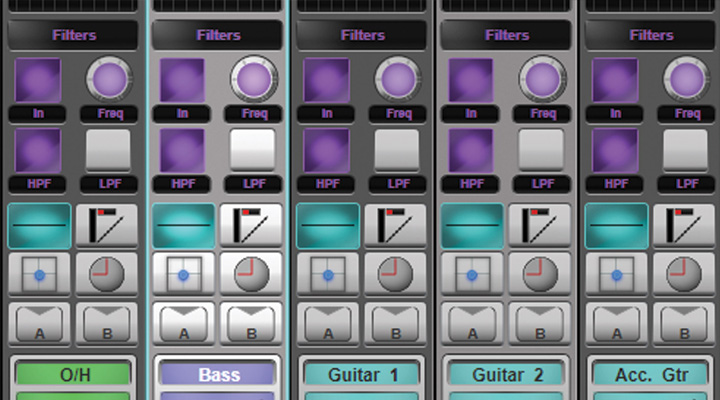
-
Colour Function
The visual cues the operator receives from a console are vital and Live uses colour beautifully. Within the fader strips a single large LED strip is used to identify and organise the type of signal path (VCA, Aux etc) or the instrument group (drums, vocals etc) assigned to the fader using colours that are freely definable by the operator. What is displayed in the touch screens and the various sets of edit control hardware can be set to always follow each other.
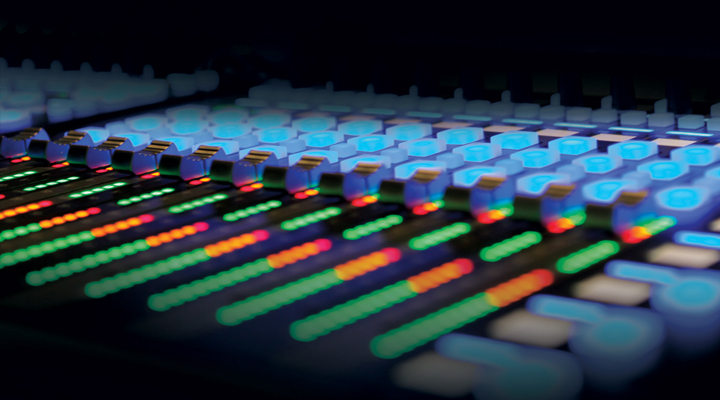
-
Stem Groups
SSL Live consoles introduce a new type of signal path not found on other live consoles called the Stem Group. They function in a similar way to a traditional subgroup, however a Stem Group has an increased feature set that makes it enormously powerful. A Stem Group is a unique type of hybrid mix bus that takes the key functions of a Sub Group, an Input, an Aux and a Matrix and rolls them into one extremely powerful tool. Stem Groups offer incredibly flexible routing options within the mix engine not found on any other live console. As with all other path types they can be configured in mono, stereo, LCR, 4.0 or 5.1. Both full and dry versions are available. Stem Groups offer truly new and powerful ways to think about mixing and offer flexible solutions to manage your creative environment.
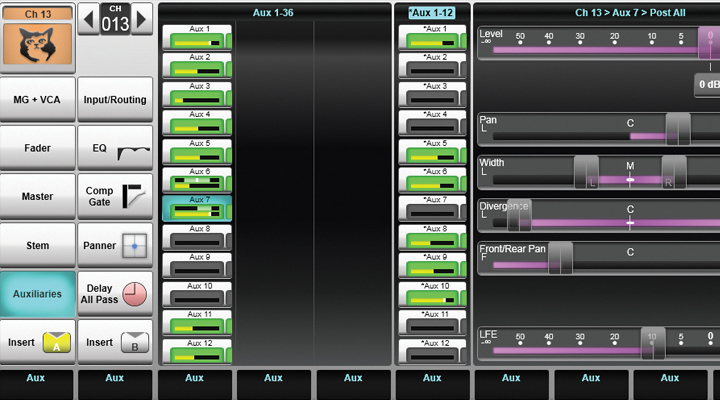
-
Super-Q
SSL’s acclaimed Super-Q system offers unprecedented workflow flexibility at the touch of a single button. Super-Q allows the user to ‘spill out’ the contributing elements or destinations for a selected fader/path across the control surface. It works for all path types; pressing a channel’s ‘Q’ button on the Fader Tile or TaCo Screen Query interfaces, shows the mix buses to which the channel is routed. Querying a mix bus will show only the channels that are contributing to that mix. Pressing a VCA master's Q button will show all channels under its control. Super-Q also shows the send levels to and from mixes, allowing instant and accurate mix control, either from a channel- or mix-centric view. These contributions can be displayed either on the quick controls at the top of each fader strip or automatically ‘flipped’ onto the faders to give an intuitive sends on faders view.
A new “Query to Focus Fader” option assigns the queried path to the Focus Fader. A new Clear Query User Key provides a rapid method of exiting Query mode from the same button every time.
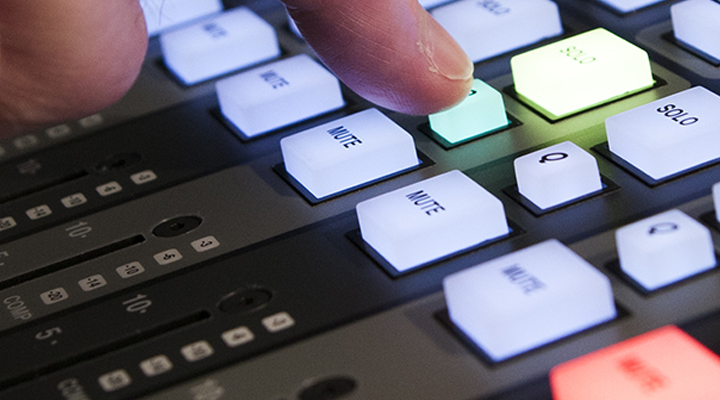
-
Fader Tile
Fader tiles are freely configurable to control any signal path, with clear bright colour coding. Users can lay out channel/path types across the console to precisely match their own workflow. Fader tiles are independently configurable with up to five layers of up to five banks of 12 faders per tile. Layer and bank keys with LCDs and multicolour LED bars provide rapid layer and bank navigation. Each strip includes a touch sensitive 100mm motorised fader, Solo, Mute, Query and Select buttons, an individual backlit LCD and a set of Quick Controls. Alongside each channel fader is a 14 segment level meter and separate gate and compression meters. A collection of menu buttons select various aspects of the Tile’s functionality, including ‘Swap’ which allows any bank to be set as a ‘Home’ set of strips and 'Flip' which flips the parameters currently assigned to the quick control rotary encoders to the faders. A ‘Screen’ key assigns the entire tile to the screen mixer view for more detailed control.
